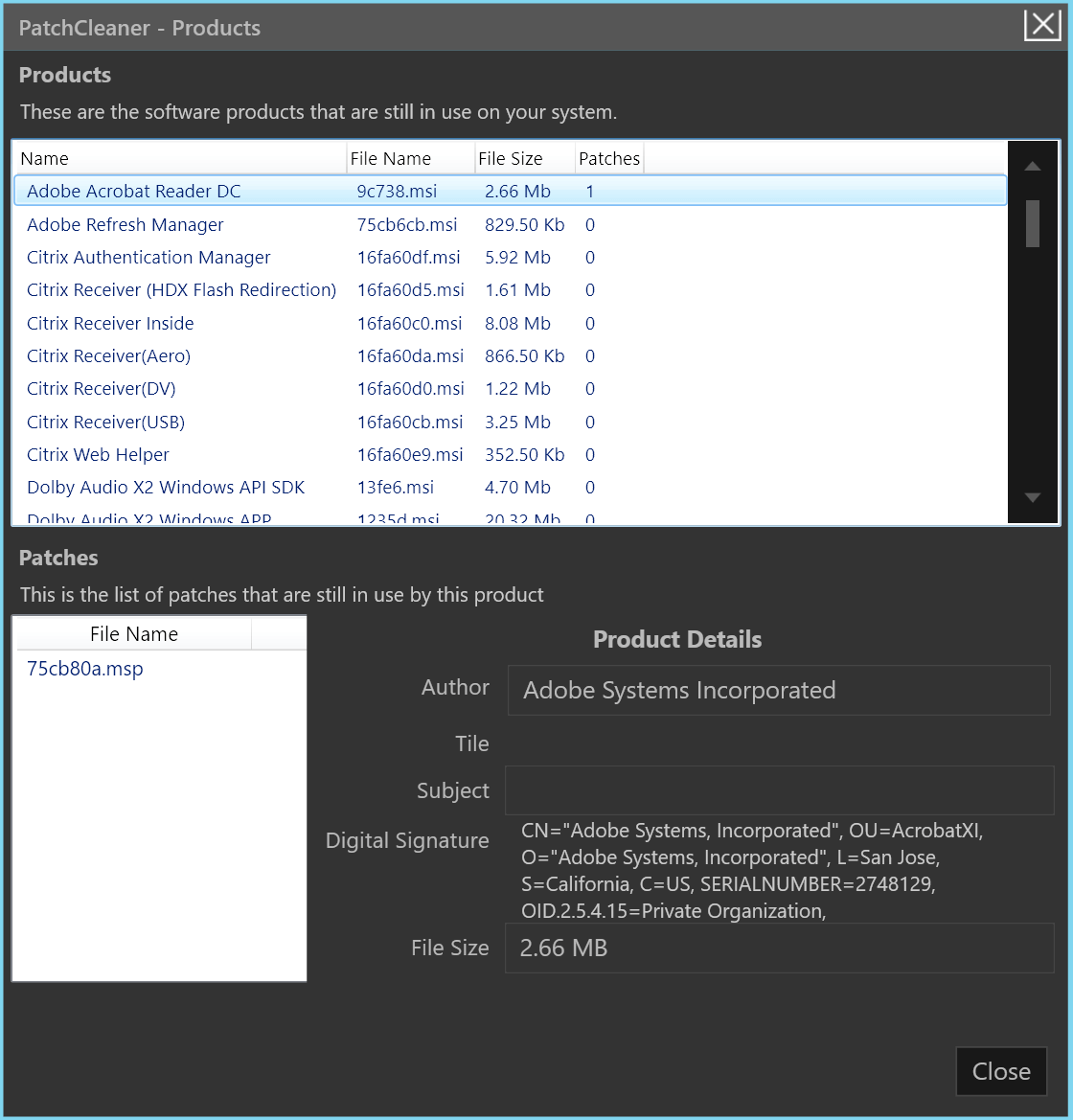When applications are installed on your PC using Windows Installer, the setup program and patch files are added to a hidden \Windows\Installer folder. These are used later whenever you need to modify, update or uninstall the software.
These files should be removed automatically when software is completely uninstalled, but this doesn't always happen. Some PCs may have many orphaned files taking up gigabytes of drive space.
PatchCleaner is a free tool which scans your Windows Installer folder for redundant items. Essentially it uses WMI to obtain the official list of installers and patches, assumes all those files are required, and highlights everything else as "orphaned".
By default the program will move the files to another folder, rather than delete them. We would recommend you keep that setting, so you can copy files back if they turn out to be necessary after all.
Once you've set up the "Move" folder, PatchCleaner is very straightforward. Run it, check the list of orphaned files (if any), click a button to move them and you're done.
We tried the program on a Windows 10 laptop, where it recovered 312MB with no apparent issues. That's not huge, but still worth having, especially as it's a gain you won't see with more conventional disk cleanup tools.
Verdict:
A simple way to recover (potentially) large amounts of drive space. Make sure you move the files rather than delete them, though, so you can easily copy them back if PatchCleaner accidentally deletes something important.









Your Comments & Opinion
Optimise, clean and repair your PC
Remove Steam, Origin, Uplay, GoG junk
Quickly find and delete a host of hard drive junk
Free up space on your Mac by removing unnecessary files
Monitor, repair and speed up your PC
Deframent and optimise your Mac's hard drive
A notepad/ to-do tool with cloud sync
Read, write and edit metadata in more than 130 file types with this command line tool
Read, write and edit metadata in more than 130 file types with this command line tool
Read, write and edit metadata in more than 130 file types with this command line tool
Manage your files and folders with this dual pane tabbed Explorer replacement